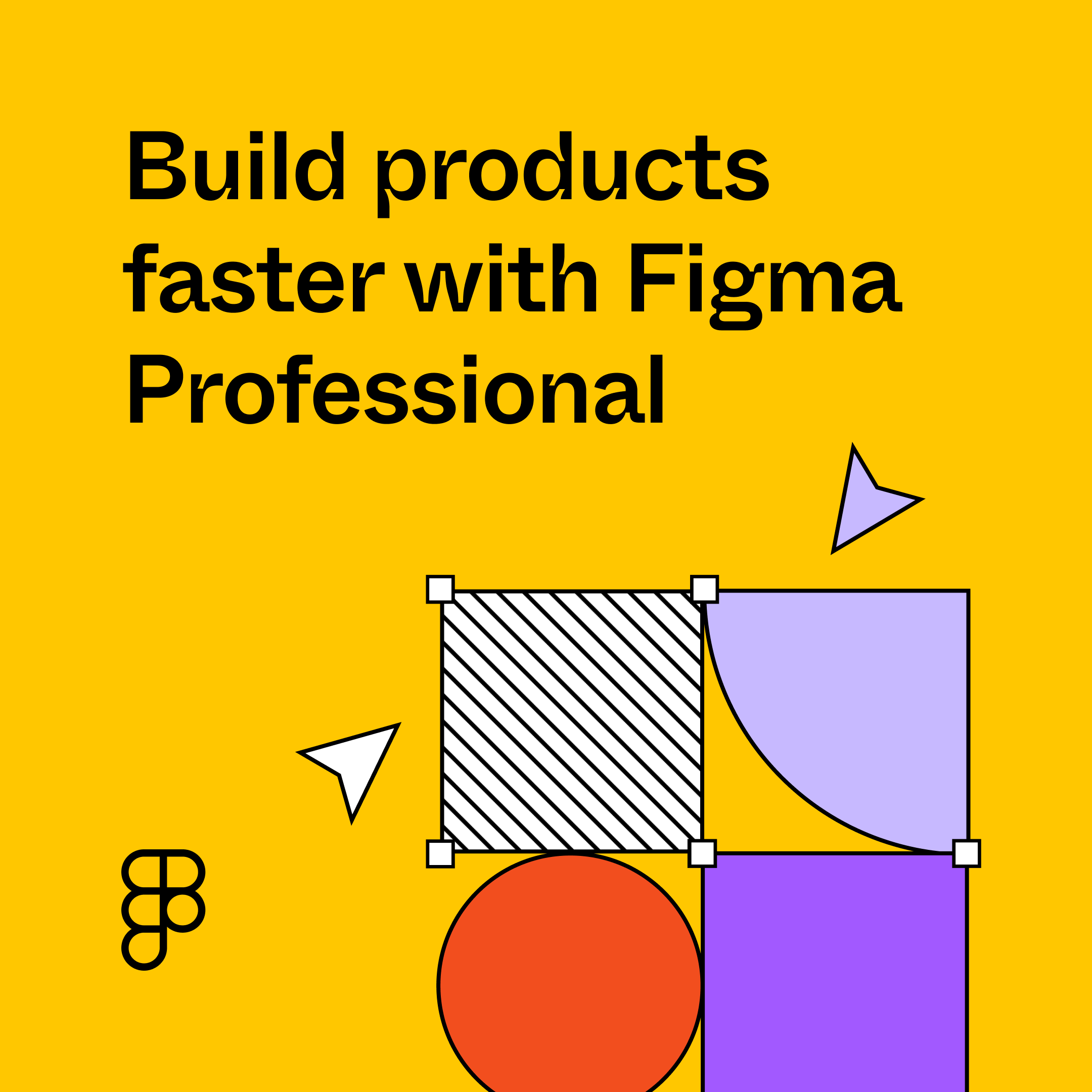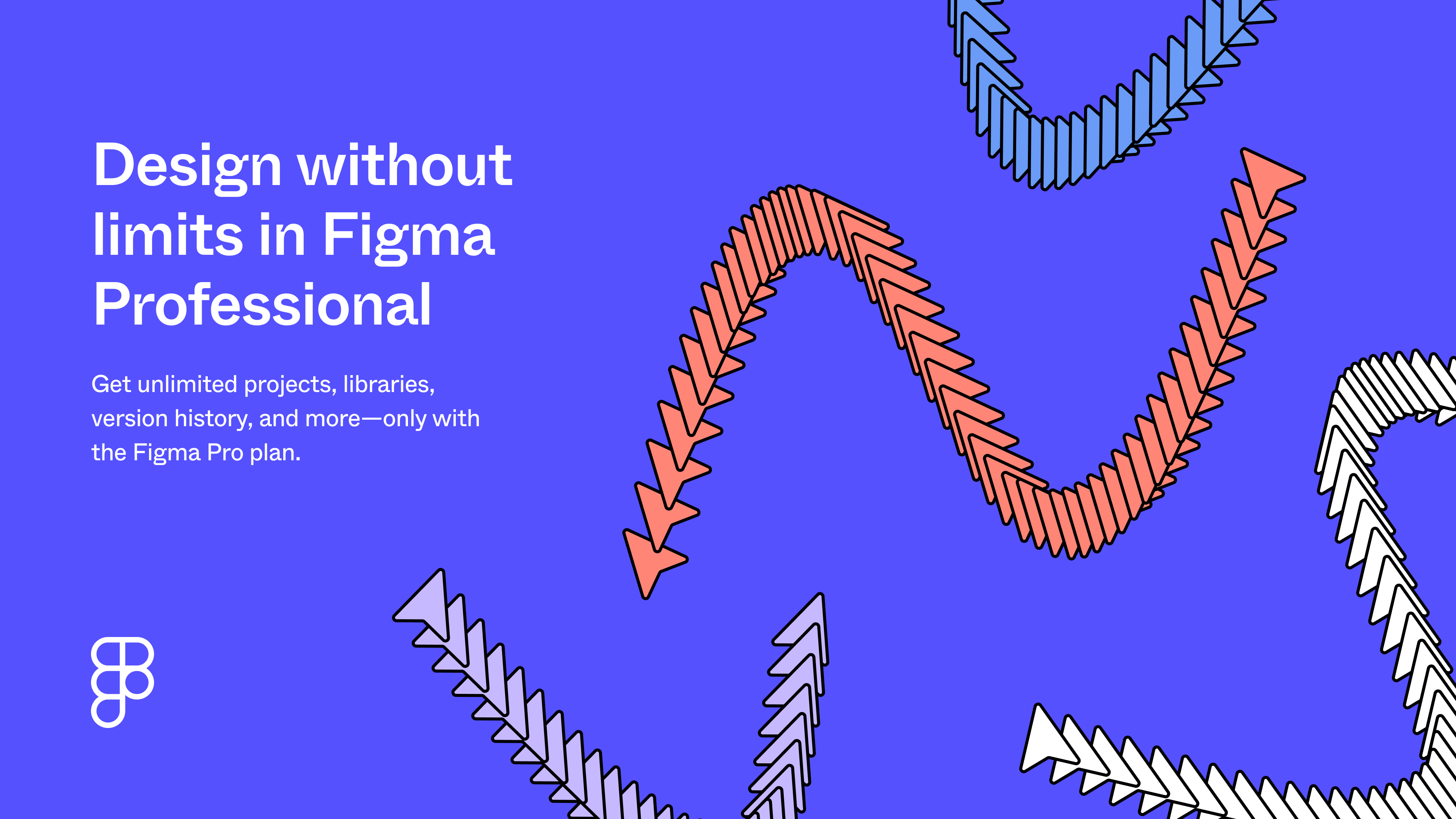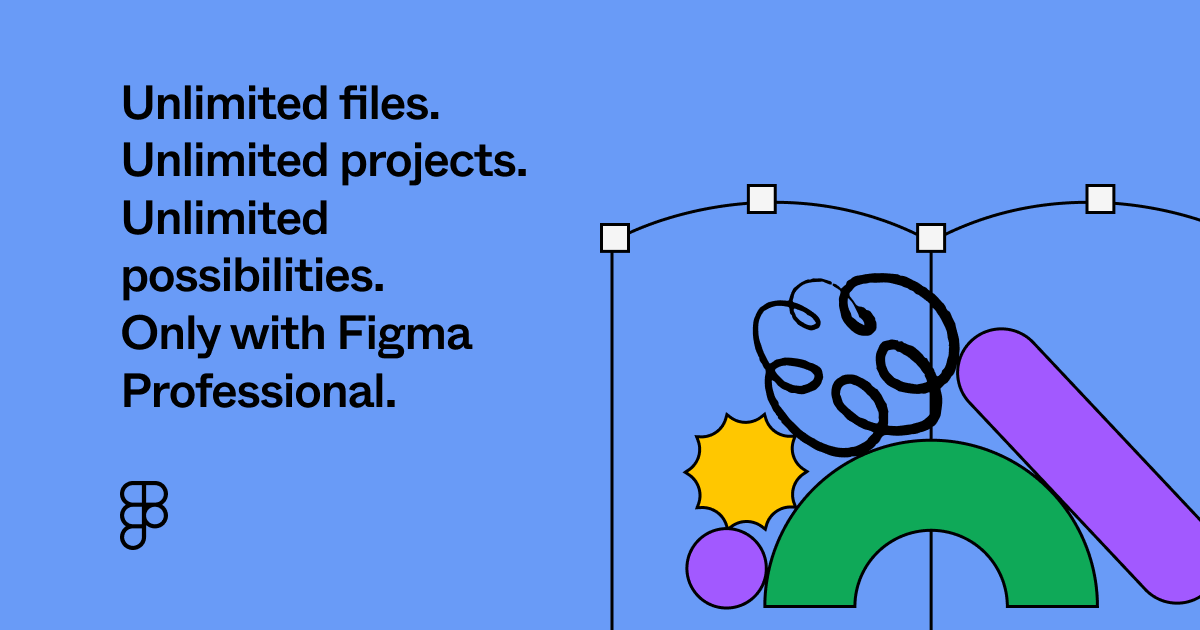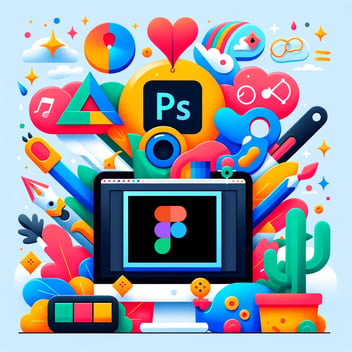
6 Reasons Why to Make the Switch to Figma for Enhanced Design Workflows
This post may contain affiliate links, which means I may receive a commission if you click a link and purchase something that I have recommended. Thank you!
In the ever-evolving landscape of web design, the choice of tools significantly shapes the productivity and creativity of design teams. Figma has rapidly emerged as a frontrunner in this arena, offering a suite of features that cater to the dynamic needs of modern design workflows. Here, we explore the compelling reasons why your design team should consider switching to Figma, a tool that's redefining collaboration, efficiency, and innovation in design.
Figma is not just another design tool; it's a platform that transforms how designers collaborate and bring their ideas to life. Boldly breaking away from traditional tools like Adobe XD and Sketch, Figma introduces a new paradigm of design work that aligns perfectly with the needs of today's fast-paced, collaborative, and remote-friendly work environments.
But why are design teams worldwide making the leap to Figma? This article delves deep into the unparalleled advantages Figma offers — from its real-time collaboration capabilities to its seamless prototyping and extensive plugin ecosystem. Each point we discuss is more than just a feature; it's a step towards a more integrated, efficient, and creative design process.
Whether you're managing a small creative team or leading a large design department, understanding the transformative impact of Figma is crucial in this digital era. By the end of this article, you'll not only grasp the key reasons to switch but also be equipped with the insights to drive your team's design capabilities to new heights.
Stay tuned as we unveil each of these reasons, backed by case studies, expert opinions, and real-world applications, demonstrating why Figma is rapidly becoming the go-to design tool for teams committed to excellence and innovation in their design journey.
Get ready to discover how Figma can revolutionize your design team's workflow, efficiency, and creativity.
Psst - does this toggle look familiar?
Collaborative Design Reimagined: How Figma Transforms Team Workflow
In the realm of digital design, real-time collaboration is no longer a luxury but a necessity. Figma's groundbreaking approach to collaborative design reshapes how teams interact, ideate, and bring designs to life. This section explores the transformative impact of Figma's real-time collaboration features and why they are a game-changer for any design team.
Figma's Real-Time Collaboration: A Paradigm Shift
Gone are the days of back-and-forth emails and disjointed feedback sessions. Figma introduces a cohesive workspace where design teams can collaborate in real-time on the same Figma file. This immediate interaction eliminates the common bottlenecks of version control and asynchronous communication, propelling projects forward at an unprecedented pace.
The platform allows every team member, regardless of their location, to contribute, comment, and make changes in real-time. This not only speeds up the design process but also enhances the quality of the output. By enabling a simultaneous view of the design progress, Figma fosters a more inclusive and dynamic design environment.
Enhancing Team Synergy and Efficiency
Figma's real-time collaboration extends beyond mere convenience. It's about building a synergistic environment where ideas can be shared and refined instantly. Designers can witness changes as they happen, provide instant feedback, and converge on design decisions more swiftly. This collaborative approach is especially vital in a remote work setting, where maintaining team cohesion and momentum is crucial.
Furthermore, Figma's collaboration tool is not just for designers. It opens the door for seamless interaction with project managers, developers, and stakeholders, making the design review process more transparent and inclusive. This level of engagement across different roles within a project ensures that everyone is aligned with the design vision and objectives.
TL;DR: Key Benefits of Figma’s Real-Time Collaboration
- Simultaneous Collaboration: Multiple designers can work on the same design file in real-time, enhancing teamwork and creativity.
- Reduced Communication Barriers: Immediate feedback and changes streamline the design process and minimize misunderstandings.
- Enhanced Project Pace: Real-time updates and interactions accelerate project timelines and decision-making.
- Inclusive Design Reviews: Stakeholders and team members from various departments can participate in the design process, ensuring a unified vision.
- Remote-Friendly: Figma's cloud-based platform is ideal for distributed teams, maintaining cohesion and efficiency regardless of geographical location.
By harnessing the power of real-time collaboration, Figma not only speeds up the design process but also elevates the quality of the output. It’s a tool that reimagines teamwork in the digital design landscape, making it a critical asset for any forward-thinking design team.
Figma vs. Adobe XD: Tailoring UX Design with Superior Tools
In the landscape of digital design tools, the comparison of Figma with Adobe XD often centers on their capabilities in facilitating superior User Experience (UX) design. This section delves into why Figma's nuanced approach and robust features make it a preferred choice for UX designers, particularly when dealing with complex design challenges.
Figma: A Paradigm Shift in UX Design
Unlike Adobe XD which primarily functions as a desktop app, Figma breaks the mold with its browser-based app, bringing unparalleled flexibility and accessibility. This shift from a traditional desktop application to a web-based platform means that UX designers can access and work on their designs from anywhere, at any time. Figma's cloud-centric model ensures that all updates and changes are instantly available to the entire team, making collaboration more fluid and dynamic.
Complex Design Made Simple
Figma's approach to UX design is built on the premise of simplifying complex design processes. It handles intricate design systems efficiently, thanks to its powerful features that streamline the transition from sketch to final design file. Figma’s toolset is designed to tackle the challenges of complex UX projects, making it easier for designers to navigate and create detailed, user-centric designs.
Innovative Features for Enhanced Workflow
Figma works to enhance the UX design workflow with its array of innovative features. The tool supports a wide range of UX design needs - from wireframing to prototyping - within a single, unified environment. This consolidation of features reduces the need to switch between different tools, allowing UX designers to focus more on creativity and problem-solving.
Additionally, Figma is built with collaboration in mind. Its real-time collaboration capabilities mean that UX teams can work together seamlessly, sharing ideas, and iterating designs on the fly. This aspect of Figma is especially crucial when working on complex designs that require input and validation from multiple stakeholders.
TL;DR: Figma's Edge in UX Design
- Web-Based Flexibility: Access and work on UX projects from any location, offering a significant advantage over traditional desktop apps.
- Streamlined Handling of Complex Designs: Figma is built to simplify the management and execution of complex UX design projects.
- Integrated UX Toolset: From sketch to final design file, Figma offers all the necessary tools for comprehensive UX design within one platform.
- Real-Time Collaboration: Figma works to foster a collaborative environment, essential for iterative and user-centric UX design.
By choosing Figma, UX design teams not only gain a tool that adapts to their complex needs but also embrace a future where design is more integrated, collaborative, and efficient. Figma's user-friendly interface and powerful features make it an indispensable asset for UX designers aiming to create impactful and user-centric designs.
Curious about Illustrator vs Figma? Check this video instead!
Prototyping Redefined: Figma's Integrated Approach to Design and Development
Prototyping and handoff are critical phases in the design process, and Figma offers a game-changing approach to these stages. This section explores how Figma's integrated prototyping tools and efficient handoff capabilities are revolutionizing the way designers and developers collaborate.
Integrated Prototyping: Bringing Ideas to Life Effortlessly
Figma stands out with its built-in prototyping features, enabling designers to create interactive, high-fidelity prototypes within the same environment used for designing. This seamless integration eliminates the need for switching between different tools, thereby streamlining the workflow. Designers can easily link frames, add interactions, and create dynamic user flows without leaving Figma.
The ability to prototype in Figma not only saves time but also allows for more iterative and responsive design development. Designers can quickly test and refine their ideas, receiving immediate feedback from team members or stakeholders. This agility in prototyping enhances the overall quality and effectiveness of the final design.
Streamlined Handoff to Developers
The handoff process in Figma is equally impressive. It simplifies the transition from design to development by automatically generating CSS, iOS, and Android code. Developers can access these specifications directly from the Figma file, ensuring that they have all the necessary information to start building the product accurately.
This feature is a major timesaver and reduces the potential for misinterpretation or errors during the handoff. By providing a 'single source of truth,' Figma ensures that everyone involved in the project - designers, developers, project managers - is aligned and working from the latest, most accurate version of the design.
TL;DR: Figma’s is Great on Prototyping and Handoff!
- Seamless Prototyping: Create interactive prototypes directly within the Figma design environment, enhancing workflow efficiency.
- Iterative Design Development: Quickly test and refine designs, making the prototyping process more responsive and dynamic.
- Direct Code Generation: Figma automatically generates code for various platforms, facilitating an easier handoff to developers.
- Single Source of Truth: Maintain alignment across the team with a unified, up-to-date design file, reducing errors and miscommunications.
- Time-Saving Handoff: Streamline the transition from design to development, speeding up project timelines.
Through its integrated prototyping and streamlined handoff capabilities, Figma not only optimizes the design process but also bridges the gap between design and development, making it a pivotal tool for any design team looking to enhance efficiency and collaboration.
Mastering Efficient Design Systems with Figma's Advanced Tooling
Prototyping and handoff are critical phases in the design process, and Figma offers a game-changing approach to these stages. This section explores how Figma's integrated prototyping tools and efficient handoff capabilities are revolutionizing the way designers and developers collaborate.
Integrated Prototyping: Bringing Ideas to Life Effortlessly
Figma stands out with its built-in prototyping features, enabling designers to create interactive, high-fidelity prototypes within the same environment used for designing. This seamless integration eliminates the need for switching between different tools, thereby streamlining the workflow. Designers can easily link frames, add interactions, and create dynamic user flows without leaving Figma.
The ability to prototype in Figma not only saves time but also allows for more iterative and responsive design development. Designers can quickly test and refine their ideas, receiving immediate feedback from team members or stakeholders. This agility in prototyping enhances the overall quality and effectiveness of the final design.
Streamlined Handoff to Developers
The handoff process in Figma is equally impressive. It simplifies the transition from design to development by automatically generating CSS, iOS, and Android code. Developers can access these specifications directly from the Figma file, ensuring that they have all the necessary information to start building the product accurately.
This feature is a major timesaver and reduces the potential for misinterpretation or errors during the handoff. By providing a 'single source of truth,' Figma ensures that everyone involved in the project - designers, developers, project managers - is aligned and working from the latest, most accurate version of the design.
TL;DR: Figma’s Impact on Prototyping and Handoff
- Seamless Prototyping: Create interactive prototypes directly within the Figma design environment, enhancing workflow efficiency.
- Iterative Design Development: Quickly test and refine designs, making the prototyping process more responsive and dynamic.
- Direct Code Generation: Figma automatically generates code for various platforms, facilitating an easier handoff to developers.
- Single Source of Truth: Maintain alignment across the team with a unified, up-to-date design file, reducing errors and miscommunications.
- Time-Saving Handoff: Streamline the transition from design to development, speeding up project timelines.
Through its integrated prototyping and streamlined handoff capabilities, Figma not only optimizes the design process but also bridges the gap between design and development, making it a pivotal tool for any design team looking to enhance efficiency and collaboration.
The Power of Figma Plugins: Customizing Your Design Experience
Figma's plugin ecosystem stands as a testament to its adaptability and user-centric design approach. This section delves into how Figma's wide range of plugins enhances the functionality, creativity, and productivity of design teams, making it a versatile tool for a myriad of design tasks.
Expanding Capabilities Beyond Basic Design
The true power of Figma lies in its ability to extend its core functionalities through plugins. These plugins, developed by a community of creators, offer solutions for almost every conceivable design need. From automating mundane tasks like formatting and layout adjustments to integrating with other applications like Slack or JIRA, Figma's plugins significantly boost productivity and streamline the design workflow.
Figma's plugins are not just about efficiency; they also inspire creativity. Plugins that offer advanced animation capabilities, icon libraries, or color palette generators enable designers to experiment and explore new design frontiers without leaving the Figma environment.
Empowering Teams with Customized Workflows
Each design team has unique needs and workflows. Figma’s customizable nature through plugins means that teams can tailor the tool to fit their specific requirements. Whether it’s a plugin for accessibility testing, content generation, or brand asset management, Figma’s plugin ecosystem ensures that the tool adapts to the team, not the other way around.
This level of customization is particularly beneficial for teams working on diverse projects or those that need to integrate their design tools with other software in their tech stack. It ensures that Figma remains a relevant and powerful tool regardless of the evolving needs of the team.
TL;DR: Benefits of Figma’s Plugin Ecosystem
- Wide Range of Functionalities: A diverse array of plugins to extend Figma’s core capabilities, catering to various design needs.
- Boost in Productivity: Automation and integration plugins streamline the design process, saving time and reducing manual effort.
- Enhanced Creativity: Access to advanced design tools and resources within Figma, fostering creative exploration.
- Customizable Workflows: Ability to tailor Figma to specific team needs and workflows, enhancing overall efficiency.
- Integration with Other Tools: Seamless integration with other applications and software, making Figma a central hub for design work.
Figma’s extensive plugin ecosystem not only amplifies its functionality but also ensures that it remains a versatile and indispensable tool for design teams, adaptable to any project or requirement.
Optimizing Remote Collaboration: Why Teams Prefer Figma in a Digital Workplace
In an era where remote work has become the norm, Figma emerges as an essential tool for design teams spread across different locations. This section highlights how Figma's cloud-based nature and collaborative features make it ideal for remote teams, ensuring effective communication, cohesion, and productivity regardless of geographical barriers.
Breaking Down Geographical Barriers in Design
Figma's browser-based platform is a boon for remote teams. It allows designers to access their work from anywhere, on any device with an internet connection, without the need for heavy software installations. This accessibility is crucial for teams working across different time zones, ensuring that everyone has access to the latest design files and can contribute at their convenience.
Moreover, Figma’s real-time collaboration features come to the forefront in remote settings. Team members can work together on a design file, share feedback instantaneously, and make decisions quickly, mimicking the collaborative environment of a physical workspace. This level of interaction is invaluable in maintaining team dynamics and ensuring that remote work does not lead to isolation or communication gaps.
Enhancing Productivity and Efficiency in Remote Settings
Beyond facilitating collaboration, Figma helps remote teams stay organized and efficient. Features like version history, commenting, and the ability to track changes ensure that all team members are on the same page, reducing the likelihood of errors or misunderstandings.
Figma also integrates with project management tools, allowing teams to streamline their workflow and maintain a clear overview of project timelines and responsibilities. This integration is particularly important for remote teams that rely on digital tools for project tracking and communication.
TL;DR: Figma as a Remote Work Enabler
- Accessibility Anywhere: Work on design projects from any location, ensuring constant access to the latest files.
- Real-Time Collaboration: Collaborate seamlessly with team members, regardless of their physical location.
- Enhanced Team Dynamics: Maintain team cohesion and dynamics, despite working remotely.
- Efficient Project Management: Integration with project management tools for a streamlined remote workflow.
- Organized and Error-Free Work: Features like version history and commenting reduce misunderstandings and keep projects on track.
Figma's capabilities make it an indispensable tool for remote design teams, offering the flexibility, collaboration, and efficiency needed to thrive in today’s digital and distributed work environment.
Embracing the Future of Design. No really, switch to Figma.
In conclusion, Figma stands out as a transformative tool for design teams, blending innovation, collaboration, and efficiency into a single, user-friendly platform. From fostering real-time collaboration and breaking down geographical barriers in remote work to offering an extensive plugin ecosystem and streamlined prototyping and handoff processes, Figma addresses the multifaceted challenges faced by today's design teams. It transcends being just a design tool; it's a comprehensive solution that adapts to the evolving needs of designers, project managers, and developers alike.
By choosing Figma, teams not only optimize their workflow but also embrace a future where design is more integrated, collaborative, and impactful. Whether for a small startup or a large enterprise, Figma's ability to revolutionize the design process makes it an invaluable asset for any team looking to lead and innovate in the digital space.
Frequently Asked Questions
1. Why do people choose Figma?
People choose Figma for its advanced collaboration capabilities, user-friendly interface, and versatility. As a cloud-based platform, it enables real-time collaboration, allowing multiple team members to work on a design simultaneously. Its extensive plugin ecosystem and efficient prototyping tools further enhance its appeal, making it a comprehensive solution for modern design needs.
2. Why should I switch to Figma?
Switching to Figma can significantly improve your design workflow due to its real-time collaboration features, browser-based accessibility, and integrated prototyping tools. These features facilitate a more dynamic and efficient design process, especially for teams looking for a seamless way to collaborate and iterate on designs quickly.
3. What is the major advantage of Figma?
The major advantage of Figma is its real-time collaboration capability. This feature allows designers to work together on the same project from different locations, providing instant feedback and speeding up the design process. Additionally, being a web-based tool, Figma ensures accessibility and ease of use across different devices and platforms.
4. What is the purpose of using Figma?
The primary purpose of using Figma is to streamline the design process through enhanced collaboration, ease of use, and a unified platform for creating, prototyping, and handing off designs. It's designed to improve the efficiency and productivity of design teams, making it easier to create high-quality designs with faster turnaround times.
5. Should I switch to Figma?
Switching to Figma can be beneficial if you value collaboration, want to streamline your design process, and prefer a tool that integrates various design stages into one platform. If your team works remotely or if you're looking for a more efficient way to prototype and hand off designs, Figma is an excellent choice.
6. Why use Figma instead of Adobe XD?
Choose Figma over Adobe XD for its superior real-time collaboration features, extensive plugin ecosystem, and ease of accessibility as a browser-based tool. Figma's user interface is often considered more intuitive, and its integration with other tools and systems makes it a more versatile choice for diverse design needs.
7. Why use Figma instead of Adobe Photoshop?
Figma is preferred over Adobe Photoshop for UI/UX design and prototyping because it's specifically tailored for these tasks, whereas Photoshop is more oriented towards photo editing and graphic design. Figma offers real-time collaboration, a feature not native to Photoshop, making it more suitable for modern, team-based design projects.
8. Why use Figma instead of Sketch?
Figma is often chosen over Sketch due to its platform independence as a web-based tool, enabling access on multiple operating systems, whereas Sketch is limited to macOS. Figma's real-time collaboration and cloud-based file storage provide a more flexible and collaborative environment compared to Sketch's more solitary design approach.




